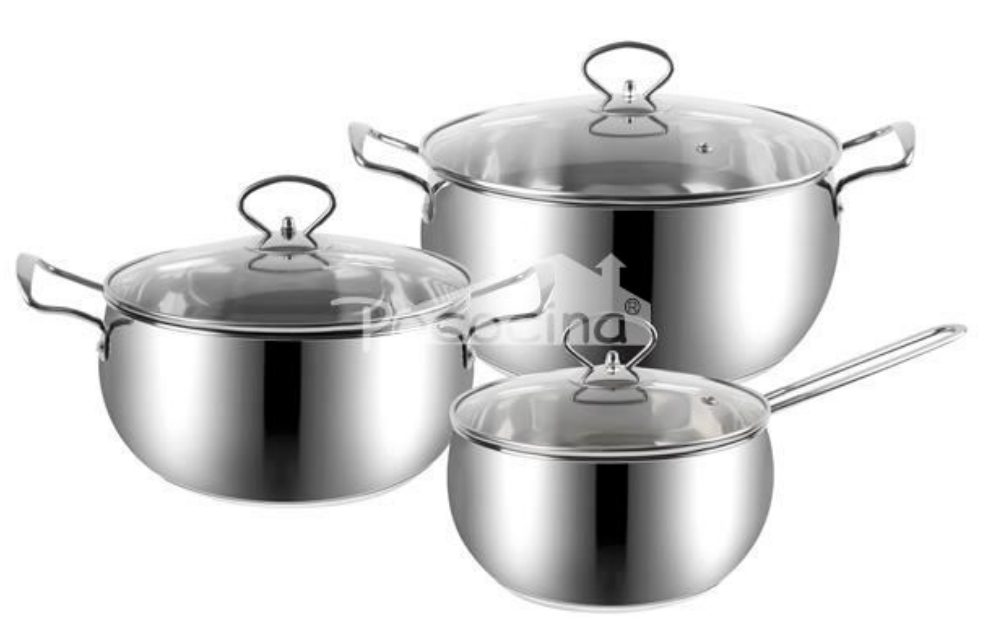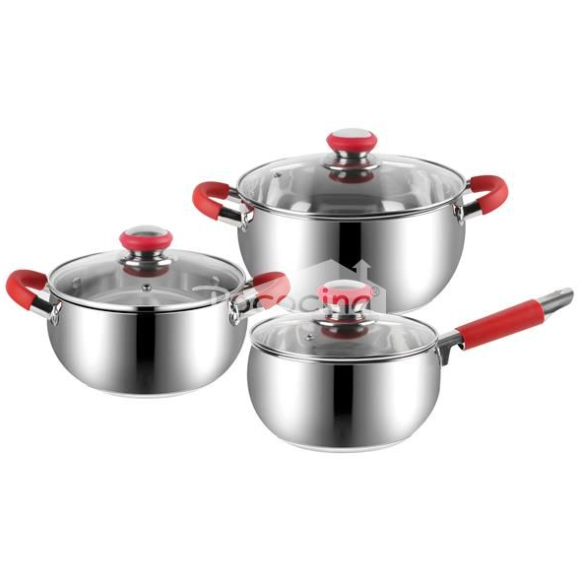Email us at Hailey@topkitchen.cn or Call us today at +86-158 1491 0345
To learn how we can help you with your kitchenware and cookware needs.
Stainless steel cookware are known to be a timeless piece of cooking ware. However, you may be confused about what the various series of a typical stainless steel cookware means. If you find yourself in that boat, this post will help you clear your curiosity.
At the bottom of a stainless steel pot, you will find a grade imprinted on it; this grade helps to know its capacity to resist rust and corrosion and its durability. The 300 series pots and pans are of good quality and are designated as either 304 or 316.
The 304 pot can be marked with either 18/8 or 18/10 which signifies the large amount of chromium and nickel the alloy contains. The first number of the sequence, which is eighteen (18), signifies the chromium's percentage; the second number signifies nickel's percentage. Almost all stainless cookware is an 18/10 grade, that is, 18 percent chromium/ 10 percent nickel.
The difference between a 304 and 316 pot in terms of material is always neglected. Nevertheless, the 316 grade which is less common, contains molybdenum (Mo) and /or titanium(Ti) at smaller percentage.
This also add up to its more corrosion resistant capacity and a little bit expensive. The 316 grade, also known as marine stainless steel, has a better resistance to salt water.
Another term for this most- expensive grade is a Surgical steel as it is used in biomedical implants.Apparently, a corrosion-free pin will be chosen as a metal pin in gripping a fractured bone together.

The 400 series stainless steel is more corrosive than that of 300 series, thus, it rusts with age. It is mostly used in combination with kitchen utensils, low price stockpots and bowls. For a pot with a long life-span, one from the 300 series should be opted for.
The 400 series includes those called nickel-free stainless steel cookware, that is,18/0, which contains an insignificant quantity of nickel (0.75%): hence, people with uncommon nickel sensitivities are warned not to use any stainless steel cookware among which is the 400 series.
To know whether a pot's interior or exterior contains nickel, a magnet can be placed against it, as nickel is not magnetic. Any part of the pot that holds a magnet is nickel-free. ( The bottom of a stainless pot must be nickel-free to be consistent with induction stove tops).
Here are three tips to reduce a stainless reactivity, as it is soothingly reactive
1. Food should be removed from the stainless steel pot as soon as the dish has cooked. Use ceramic pot for long cooked dishes.
2. Acids and salt easily corrode stainless. Normally, a ceramic pot should be used when making a salt brine, or when using lemon, wine and vinegar. (Making long-simmered broths of bone, vinegar and salt has caused many quality stainless pot to corrode.)
3. On no occasion must you scour a stainless pot. If food has burned, the burnt should be covered with baking soda and soaked for a day or so. The burned area can then be removed using a non-scratch scouring pad.
Various types of cookware labeled as "vapor" or "waterless" are designed to enable a type of steam cooking. An addition to the quality of a stainless steel cookware is its versatility; it's of highest quality for braising, steaming, parboiling, boiling, simmering, frying and sautéing, therefore, purchasing a whole series of cookware that is designed for only one cooking style is not sensible enough.

We hope that this few tips and information here has helped you sort out your choice and preference when it comes to choosing a reliable stainless steel cookware supplier and their products. For more information or to make a purchase, kindly click here to contact us.